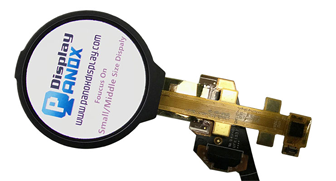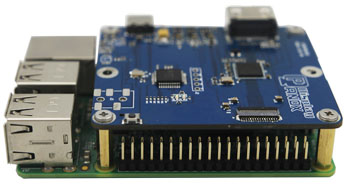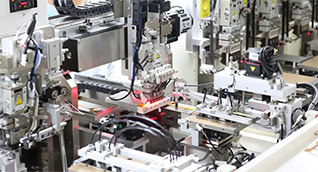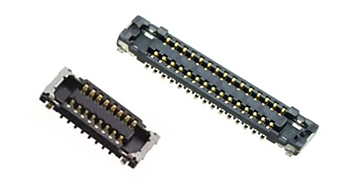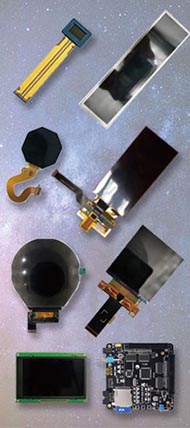A quantum well laser is a semiconductor laser diode featuring an ultra-thin active region that confines electrons and holes in a two-dimensional plane. This quantum confinement boosts efficiency, lowers threshold current, and enables precise wavelength control, making it vital for high-speed communications, sensing, and advanced display technologies.
What is a quantum well laser and how does it work?
A quantum well laser is a type of semiconductor laser diode where the active region is extremely thin—typically around 5 to 20 nanometers—forming a quantum well structure. This thin layer is sandwiched between materials with a wider bandgap, creating a potential well that confines charge carriers (electrons and holes) in one dimension while allowing free movement in the other two.
When an electric current injects carriers into the quantum well, the confinement causes discrete energy levels to form, altering the density of states to a two-dimensional profile. This leads to enhanced electron-hole recombination efficiency and stimulated emission of photons within the optical cavity formed by reflective mirrors. The emitted light wavelength depends on the quantum well thickness and material properties, enabling precise wavelength tuning beyond what bulk materials allow.
How does quantum confinement improve laser performance?
Quantum confinement in the active region modifies the density of states of electrons and holes, resulting in several key performance improvements:
-
Lower Threshold Current: Fewer carriers are needed to achieve population inversion, reducing power consumption.
-
Higher Efficiency: Enhanced recombination probability increases the output power relative to input current.
-
Narrower Spectral Linewidth: The laser emits light with a purer wavelength, improving signal quality.
-
Higher Modulation Bandwidth: Faster response times enable high-speed data transmission.
-
Thermal Stability: Reduced sensitivity to temperature variations ensures consistent performance.
These advantages make quantum well lasers superior to conventional double heterostructure lasers in many applications.
What types of quantum well lasers exist and how do they differ?
Quantum well lasers can be classified mainly into:
-
Single Quantum Well (SQW) Lasers: Contain one thin quantum well as the active region. They offer improved efficiency and lower threshold current compared to bulk lasers.
-
Multi-Quantum Well (MQW) Lasers: Comprise several quantum wells separated by barrier layers. MQW lasers provide even greater output power, lower threshold currents, and tunable emission wavelengths by adjusting well thickness and number.
MQW lasers are widely used in telecommunications and high-power applications due to their superior performance.
Which materials are commonly used in quantum well lasers?
Common semiconductor material systems for quantum well lasers include:
| Material System | Quantum Well Material | Barrier Material | Typical Emission Wavelength |
|---|---|---|---|
| Gallium Arsenide (GaAs) | GaAs | Aluminum Gallium Arsenide (AlGaAs) | 700–900 nm |
| Indium Gallium Arsenide (InGaAs) | InGaAs | GaAs | 900–1300 nm |
| Indium Phosphide (InP) | Indium Gallium Arsenide Phosphide (InGaAsP) | InP | 1300–1600 nm |
These materials are chosen based on desired wavelength, efficiency, and fabrication compatibility.
How are quantum well lasers manufactured?
Quantum well lasers are fabricated using advanced epitaxial growth techniques such as molecular beam epitaxy (MBE) or metal-organic chemical vapor deposition (MOCVD). These methods deposit ultra-thin semiconductor layers with atomic precision to form the quantum wells and barrier layers.
The process includes:
-
Growing alternating layers of narrow and wide bandgap materials.
-
Defining the laser cavity with reflective coatings or Bragg mirrors.
-
Adding electrical contacts and packaging for device integration.
Panox Display leverages these manufacturing advancements to provide high-quality custom and standard laser diode solutions integrated with their OLED and LCD display systems.
How do quantum well lasers compare to conventional laser diodes?
| Feature | Quantum Well Laser | Conventional Laser Diode |
|---|---|---|
| Active Region Thickness | ~5–20 nm (quantum confined) | Micrometer scale (bulk) |
| Threshold Current | Lower | Higher |
| Efficiency | Higher | Lower |
| Spectral Linewidth | Narrower | Broader |
| Modulation Speed | Higher | Lower |
| Wavelength Control | Precise via well thickness | Limited by material bandgap |
Quantum well lasers provide superior performance for modern optoelectronic applications due to their enhanced carrier confinement and optical properties.
What are the main applications of quantum well lasers?
Quantum well lasers are widely used in:
-
Telecommunications: High-speed optical fiber communication systems.
-
Data Storage: Optical drives and laser printers.
-
Sensing: Environmental monitoring, medical diagnostics, and industrial automation.
-
Display Technology: Integration with OLED/LCD panels for augmented reality and wearable devices.
-
Military and Aerospace: Secure communication and LIDAR systems.
Panox Display incorporates quantum well laser technology in their advanced display and sensing modules, enabling cutting-edge solutions for diverse industries.
How does Panox Display utilize quantum well laser technology?
Panox Display integrates quantum well lasers into their custom OEM products to enhance display performance and sensing capabilities. Their expertise includes:
-
Combining quantum well lasers with OLED and LCD panels for high-precision 3D sensing and biometric applications.
-
Providing tailored laser modules for industrial, automotive, and consumer electronics sectors.
-
Supporting startups and SMEs with flexible manufacturing and engineering services to adopt quantum well laser technology efficiently.
Panox Display’s commitment to innovation ensures clients receive reliable, cost-effective laser and display solutions.
What challenges do quantum well lasers face and how are they addressed?
Key challenges include:
-
Thermal Management: High carrier densities generate heat; advanced packaging and heat sinks are used.
-
Fabrication Complexity: Precise control of layer thickness and composition is critical.
-
Wavelength Stability: Strain engineering and material optimization improve stability.
-
Integration: Seamless integration with other photonic components requires careful design.
Panox Display collaborates with leading manufacturers and employs rigorous quality control to overcome these challenges, delivering robust quantum well laser products.
How can startups benefit from quantum well laser technology through Panox Display?
Startups often face hurdles such as high minimum order quantities and technical barriers. Panox Display addresses these by:
-
Offering low MOQ and custom prototyping services.
-
Providing engineering support for laser integration and system design.
-
Ensuring access to premium-grade quantum well lasers combined with display modules.
-
Facilitating global shipping and after-sales service.
This enables startups to innovate rapidly without prohibitive costs or delays.
Panox Display Expert Views
“Quantum well lasers represent a quantum leap in laser diode technology, offering unmatched efficiency and precision. At Panox Display, we harness this technology to empower our clients with superior display and sensing solutions. Our flexible manufacturing approach and engineering expertise make advanced quantum well laser integration accessible to startups and enterprises alike, driving innovation across industries.”
— Panox Display Technical Team
Conclusion
Quantum well lasers, with their unique quantum confinement effects, deliver significant improvements in efficiency, threshold current, and wavelength control compared to traditional lasers. Their widespread applications in telecommunications, sensing, and display technologies underscore their importance. Panox Display’s expertise in integrating quantum well lasers with OLED and LCD systems provides clients with cutting-edge, customizable solutions. For businesses aiming to leverage advanced laser technology, partnering with Panox Display offers a reliable path to innovation.
FAQs
What makes quantum well lasers more efficient than conventional lasers?
The quantum confinement in the thin active region modifies the density of states, increasing electron-hole recombination efficiency and lowering threshold current.
Can quantum well lasers emit different wavelengths?
Yes, by adjusting the thickness and material composition of the quantum well, emission wavelengths can be precisely tuned.
Are quantum well lasers suitable for small businesses and startups?
Definitely. Panox Display supports flexible order quantities and provides engineering assistance to help startups adopt this technology.
How does the multi-quantum well structure improve laser output?
Multiple quantum wells increase carrier capture and confinement, resulting in higher output power and lower threshold currents.
What industries benefit most from quantum well laser technology?
Telecommunications, medical diagnostics, data storage, sensing, and advanced display manufacturing are key sectors.











